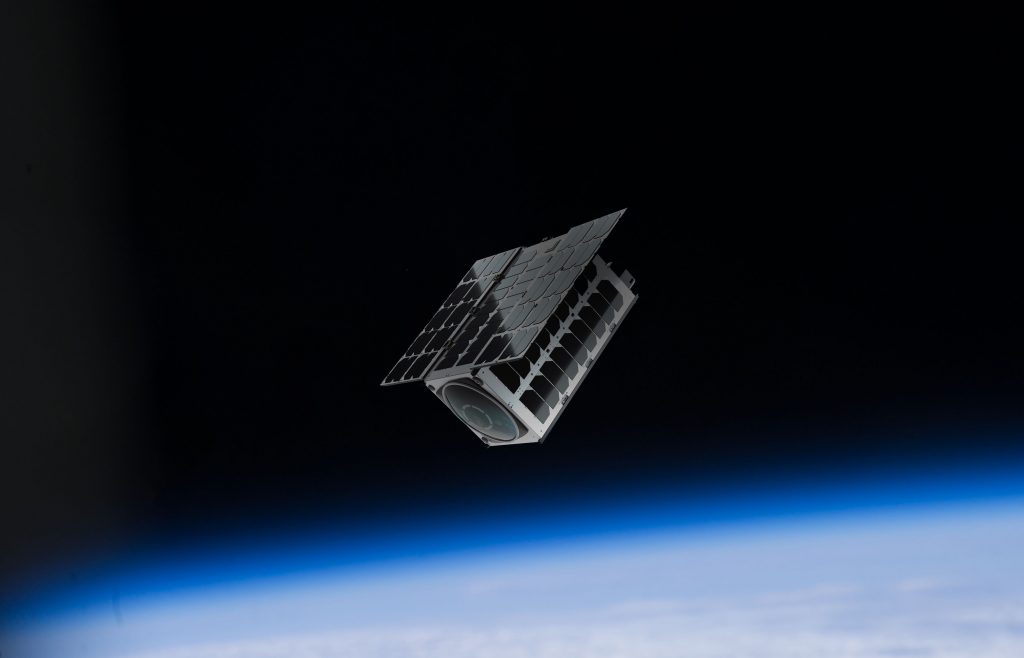Get your hands on the sharpest Thermal Infrared (TIR) imagery from Low Earth Orbit.
Discover Blue Moon, a revolutionary satellite capturing 3-meter-resolution longwave infrared imagery.
Note: A version of this blog post about small satellite stardar was first published on SpaceNews.
The NewSpace movement owes its success to cost savings achieved through miniaturization and more affordable launches. But as the space industry evolves and competition harshens with more constellations arriving, cost efficiencies must take another leap.
While launch availability has been unprecedented in recent years, and prices are much lower than five years ago, launchers like Ariane 6 and Vulcan are facing delays, while SpaceX is raising its launch prices. This shines the spotlight on spacecraft manufacturing costs. Custom-built CubeSats and small satellites are pricey, and without significant financial backing, large LEO constellations like SpaceX’s Starlink or Amazon’s Project Kuiper would be unfeasible.
A typical Earth Observation company spends millions before their small satellites start generating revenue. Speeding up satellite production and launch can reduce this initial expenditure.
To maintain the momentum, satellite operators and suppliers must rethink their production processes. The traditional approach of customizing satellite platforms to fit payloads is becoming less viable. Instead, the industry needs to invert this approach, focusing on standardization to reduce manufacturing time and costs. For most missions, customizing the satellite platform to suit the payload takes too much time and money to be continued.
NewSpace isn’t the pioneer of standardization. Industries, from automotive to cloud computing, have long recognized the benefits of standard processes and components. For satellite manufacturers, the goal should be designing products with scalability in mind. Past ventures like Globalstar and Teledesic faced setbacks due to high costs and limited demand. Today, the dynamics have changed with evolving technologies, increased capital, and reduced costs. But satellite products must be replicable and standardized to capitalize on these changes truly.
Consider the automotive industry. Modern vans, with their modular designs, can be adapted for various uses, from parcel delivery to medical transport. Similarly, once proprietary and restrictive, cloud platforms have embraced standardization, making migration and integration more user-friendly and cost-effective. Satellite builders can learn from these industries. By adopting standardized manufacturing processes and creating modular subsystems, they can offer cost-effective scalability and consistency across missions.

But is there a market demand to justify this shift towards standardization? Recent trends suggest a resounding yes. Companies are launching pathfinder missions into LEO, validating their technologies, and making necessary adjustments before mass production. SpaceX’s ambitious plan for a 42,000 satellite mega-constellation is already underway with 4,500 Starlink satellites in orbit. Other players like Planet and OneWeb are also expanding their presence in space.
Research by NewSpace expert Erik Kulu revealed that as of 2021, 251 commercial satellite constellations had been announced. Of these, 87 had launched prototypes, 82 were in development, and 35 were ready to start launching. Euroconsult’s predictions align with this trend, emphasizing the role of NGSO constellations driven by LEO broadband and Earth observation. They estimate that 81% of all smallsats launched through 2021 will be part of constellations. The smallsat manufacturing market is poised for growth, with projections reaching $56 billion over the next decade.
To understand the practical implications of customization versus standardization, let’s delve into a case study of a U.S.-based Earth-observation company. This company, backed by $20 million and a team of 30 engineers, aims to launch an 80-satellite constellation. Their journey has three phases:

Beyond cost and time, companies must also consider mission risk and satellite reliability. Newly developed satellites require extensive ground testing, while standard products have a track record of reliability from previous launches.
In conclusion, while there will always be missions that demand customization, the future of the industry leans heavily toward standardization. Modular satellite platforms are setting the trend. As other industries have shown, standardization not only boosts innovation but also opens up new markets. The choices made today will undoubtedly shape the trajectory of the commercial space industry of tomorrow.
Author: Vytenis J. Buzas, CEO of Kongsberg NanoAvionics.

Vytenis J. Buzas is the CEO of Kongsberg NanoAvionics. Prior to founding NanoAvionics, Vytenis was a project manager for nanosatellite projects, project management, fund raising and organisational activities at the Mathematics and Informatics faculty of Vilnius University in Lithuania.
Before that he was the leader and initiator of the first Lithuanian satellite LituanicaSAT-1 mission and project manager for the Lithuanian satellite project LituanicaSAT-2. He was also a scientific researcher at NASA Ames research centre where he was involved in projects related to liquid mono-propulsion systems for small spacecrafts. Including station keeping and de-orbit systems for eventual recovery of payloads.
Vytenis acquired a BSc in Aeronautical Engineering at Vilnius Gediminas Technical University, Lithuania, and a MSc. degree in Mechatronics at the Kaunas University of Technology, Lithuania.